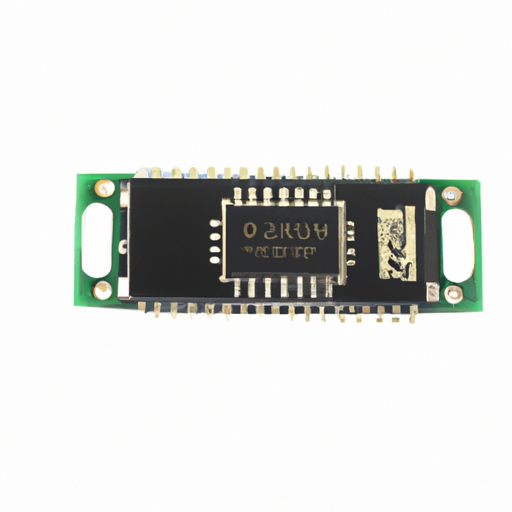Core Functional Technology of Photo Detectors - Logic Output
| Phototransistor/Photodiode: These devices operate on the principle of photoconductivity, where semiconductor materials generate charge carriers (electrons and holes) upon exposure to light. The intensity of the light directly influences the output signal, allowing for precise detection.Phototransistor/Photodiode: These devices operate on the principle of photoconductivity, where semiconductor materials generate charge carriers (electrons and holes) upon exposure to light. The intensity of the light directly influences the output signal, allowing for precise detection. |
| Logic Output: The output is binary, making it compatible with digital systems. This feature is crucial for applications in automation, control systems, and other digital interfaces.Logic Output: The output is binary, making it compatible with digital systems. This feature is crucial for applications in automation, control systems, and other digital interfaces. |
| Sensitivity: High sensitivity enables detection across a wide range of lighting conditions, from bright sunlight to dim environments.Sensitivity: High sensitivity enables detection across a wide range of lighting conditions, from bright sunlight to dim environments. |
| Response Time: Quick response times are essential for applications that require immediate feedback, such as safety systems and automation processes.Response Time: Quick response times are essential for applications that require immediate feedback, such as safety systems and automation processes. |
| Integration: The logic output facilitates seamless integration with microcontrollers, PLCs, and other digital systems, enhancing versatility in application development.Integration: The logic output facilitates seamless integration with microcontrollers, PLCs, and other digital systems, enhancing versatility in application development. |
| Use Case: In manufacturing environments, photo detectors can monitor the presence of items on conveyor belts. When an object interrupts the light beam, the detector sends a signal to the control system, prompting actions such as stopping the conveyor or activating sorting mechanisms.Use Case: In manufacturing environments, photo detectors can monitor the presence of items on conveyor belts. When an object interrupts the light beam, the detector sends a signal to the control system, prompting actions such as stopping the conveyor or activating sorting mechanisms. |
| Benefits: This application enhances operational efficiency, minimizes downtime, and reduces the likelihood of mechanical failures or jams.Benefits: This application enhances operational efficiency, minimizes downtime, and reduces the likelihood of mechanical failures or jams. |
| Use Case: Photo detectors are integral to security systems, where they can be deployed to create invisible barriers. If a person or object crosses the beam, the detector triggers an alarm or alerts security personnel.Use Case: Photo detectors are integral to security systems, where they can be deployed to create invisible barriers. If a person or object crosses the beam, the detector triggers an alarm or alerts security personnel. |
| Benefits: This provides a reliable, cost-effective solution for perimeter security, ensuring rapid response to potential breaches.Benefits: This provides a reliable, cost-effective solution for perimeter security, ensuring rapid response to potential breaches. |
| Use Case: In smart lighting systems, photo detectors can adjust the brightness of lights based on ambient light levels. For instance, they can dim indoor lights during the day when natural light is sufficient.Use Case: In smart lighting systems, photo detectors can adjust the brightness of lights based on ambient light levels. For instance, they can dim indoor lights during the day when natural light is sufficient. |
| Benefits: This not only enhances user convenience but also contributes to energy savings and extends the lifespan of lighting fixtures.Benefits: This not only enhances user convenience but also contributes to energy savings and extends the lifespan of lighting fixtures. |
| Use Case: In autonomous robots, photo detectors can facilitate line-following capabilities or obstacle avoidance. The robot can interpret signals from the detectors to navigate its environment effectively.Use Case: In autonomous robots, photo detectors can facilitate line-following capabilities or obstacle avoidance. The robot can interpret signals from the detectors to navigate its environment effectively. |
| Benefits: This improves the robot's operational efficiency and accuracy, enabling it to perform tasks in dynamic settings.Benefits: This improves the robot's operational efficiency and accuracy, enabling it to perform tasks in dynamic settings. |
| Use Case: In precision agriculture, photo detectors can monitor light levels in greenhouses, providing data to optimize artificial lighting systems for plant growth. This can include adjusting light intensity based on real-time conditions.Use Case: In precision agriculture, photo detectors can monitor light levels in greenhouses, providing data to optimize artificial lighting systems for plant growth. This can include adjusting light intensity based on real-time conditions. |
| Benefits: This leads to improved crop yields, better resource management, and reduced energy costs, contributing to sustainable farming practices.Benefits: This leads to improved crop yields, better resource management, and reduced energy costs, contributing to sustainable farming practices. |
Application Development Cases
Conclusion
The CFR-50JB-52-120K photo detectors with logic output are versatile devices that play a crucial role in various industries. Their ability to convert light into digital signals makes them indispensable in automation, security, consumer electronics, robotics, and agriculture. As technology continues to evolve, the integration of these detectors into more advanced systems will foster innovation and enhance efficiency across multiple sectors. The ongoing development of smart technologies will likely expand the applications of photo detectors, driving further advancements in automation and control solutions.






